Class 1 Class 1 U.S. senators belong to the electoral cycle that has recently been contested in 2006, 2012, 2018, and 2024.
The next election will be in 2030. | C | Class 3 Class 3 U.S. senators belong to the electoral cycle that has recently been contested in 2010, 2016, 2020 (special election), and 2022.
The next election will be in 2028. |
|---|
| # | Senator | Party | Dates in office | Electoral history | T | T | Electoral history | Dates in office | Party | Senator | # |
|---|
| Vacant | Feb 14, 1912 –
Mar 27, 1912 | Arizona became a state February 14, 1912,
but did not elect its U.S. senators until March 27. | 1 | 62nd | 1 | Arizona became a state February 14, 1912,
but did not elect its U.S. senators until March 27. | Feb 14, 1912 –
Mar 27, 1912 | Vacant |
| 1 | 
Henry F. Ashurst
(Prescott) | Democratic | Mar 27, 1912 –
Jan 3, 1941 | Elected in 1912. | Elected in 1912. | Mar 27, 1912 –
Mar 3, 1921 | Democratic | 
Marcus A. Smith
(Tucson) | 1 |
|---|
| 63rd |
| 64th | 2 | Re-elected in 1914.Lost re-election. |
| Re-elected in 1916. | 2 | 65th |
| 66th |
| 67th | 3 | Elected in 1920.Lost re-election. | Mar 4, 1921 –
Mar 3, 1927 | Republican | 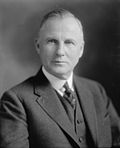
Ralph H. Cameron
(Flagstaff) | 2 |
|---|
| Re-elected in 1922. | 3 | 68th |
| 69th |
| 70th | 4 | Elected in 1926. | Mar 4, 1927 –
Jan 3, 1969 | Democratic | 
Carl Hayden
(Phoenix) | 3 |
|---|
| Re-elected in 1928. | 4 | 71st |
| 72nd |
| 73rd | 5 | Re-elected in 1932. |
| Re-elected in 1934.Lost renomination. | 5 | 74th |
| 75th |
| 76th | 6 | Re-elected in 1938. |
| 2 | 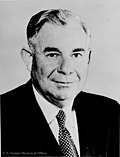
Ernest McFarland
(Florence) | Democratic | Jan 3, 1941 –
Jan 3, 1953 | Elected in 1940. | 6 | 77th |
|---|
| 78th |
| 79th | 7 | Re-elected in 1944. |
| Re-elected in 1946.Lost re-election. | 7 | 80th |
| 81st |
| 82nd | 8 | Re-elected in 1950. |
| 3 | 
Barry Goldwater
(Phoenix) | Republican | Jan 3, 1953 –
Jan 3, 1965 | Elected in 1952. | 8 | 83rd |
|---|
| 84th |
| 85th | 9 | Re-elected in 1956. |
| Re-elected in 1958.Retired to run for U.S. President. | 9 | 86th |
| 87th |
| 88th | 10 | Re-elected in 1962.Retired. |
| 4 | 
Paul Fannin
(Phoenix) | Republican | Jan 3, 1965 –
Jan 3, 1977 | Elected in 1964. | 10 | 89th |
|---|
| 90th |
| 91st | 11 | Elected in 1968. | Jan 3, 1969 –
Jan 3, 1987 | Republican | 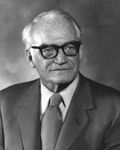
Barry Goldwater
(Paradise Valley) | 4 |
|---|
| Re-elected in 1970.Retired. | 11 | 92nd |
| 93rd |
| 94th | 12 | Re-elected in 1974. |
| 5 | 
Dennis DeConcini
(Tucson) | Democratic | Jan 3, 1977 –
Jan 3, 1995 | Elected in 1976. | 12 | 95th |
|---|
| 96th |
| 97th | 13 | Re-elected in 1980.Retired. |
| Re-elected in 1982. | 13 | 98th |
| 99th |
| 100th | 14 | Elected in 1986. | Jan 3, 1987 –
Aug 25, 2018 | Republican | 
John McCain
(Phoenix) | 5 |
|---|
| Re-elected in 1988.Retired. | 14 | 101st |
| 102nd |
| 103rd | 15 | Re-elected in 1992. |
| 6 | 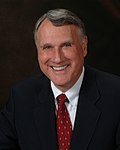
Jon Kyl
(Phoenix) | Republican | Jan 3, 1995 –
Jan 3, 2013 | Elected in 1994. | 15 | 104th |
|---|
| 105th |
| 106th | 16 | Re-elected in 1998. |
| Re-elected in 2000. | 16 | 107th |
| 108th |
| 109th | 17 | Re-elected in 2004. |
| Re-elected in 2006.Retired. | 17 | 110th |
| 111th |
| 112th | 18 | Re-elected in 2010. |
| 7 | 
Jeff Flake
(Mesa) | Republican | Jan 3, 2013 –
Jan 3, 2019 | Elected in 2012.Retired. | 18 | 113th |
|---|
| 114th |
| 115th | 19 | Re-elected in 2016.Died. |
| Aug 25, 2018 –
Sep 4, 2018 | Vacant |
| Appointed to continue McCain's term.Resigned. | Sep 4, 2018 –
Dec 31, 2018 | Republican | 
Jon Kyl
(Phoenix) | 6 |
|---|
| | Dec 31, 2018 –
Jan 3, 2019 | Vacant |
| 8 | 
Kyrsten Sinema
(Phoenix) | Democratic | Jan 3, 2019 –
Jan 3, 2025 | Elected in 2018.Left the Democratic Party on December 9, 2022.Retired. | 19 | 116th | Appointed to continue McCain's term.Lost election to finish McCain's term. | Jan 3, 2019 –
Dec 2, 2020 | Republican | 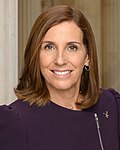
Martha McSally
(Tucson) | 7 |
|---|
| Elected in 2020 to finish McCain's term. | Dec 2, 2020 –
present | Democratic | 
Mark Kelly
(Tucson) | 8 |
|---|
| 117th |
| Independent |
| 118th | 20 | Re-elected in 2022. |
| 9 | 
Ruben Gallego
(Phoenix) | Democratic | Jan 3, 2025 –
present | Elected in 2024. | 20 | 119th |
|---|
| 120th |
| 121st | 21 | To be determined in the 2028 election. |
| To be determined in the 2030 election. | 21 | 122nd |
| # | Senator | Party | Years in office | Electoral history | T | C | T | Electoral history | Years in office | Party | Senator | # |
|---|
| Class 1 | Class 3 |
|---|

















